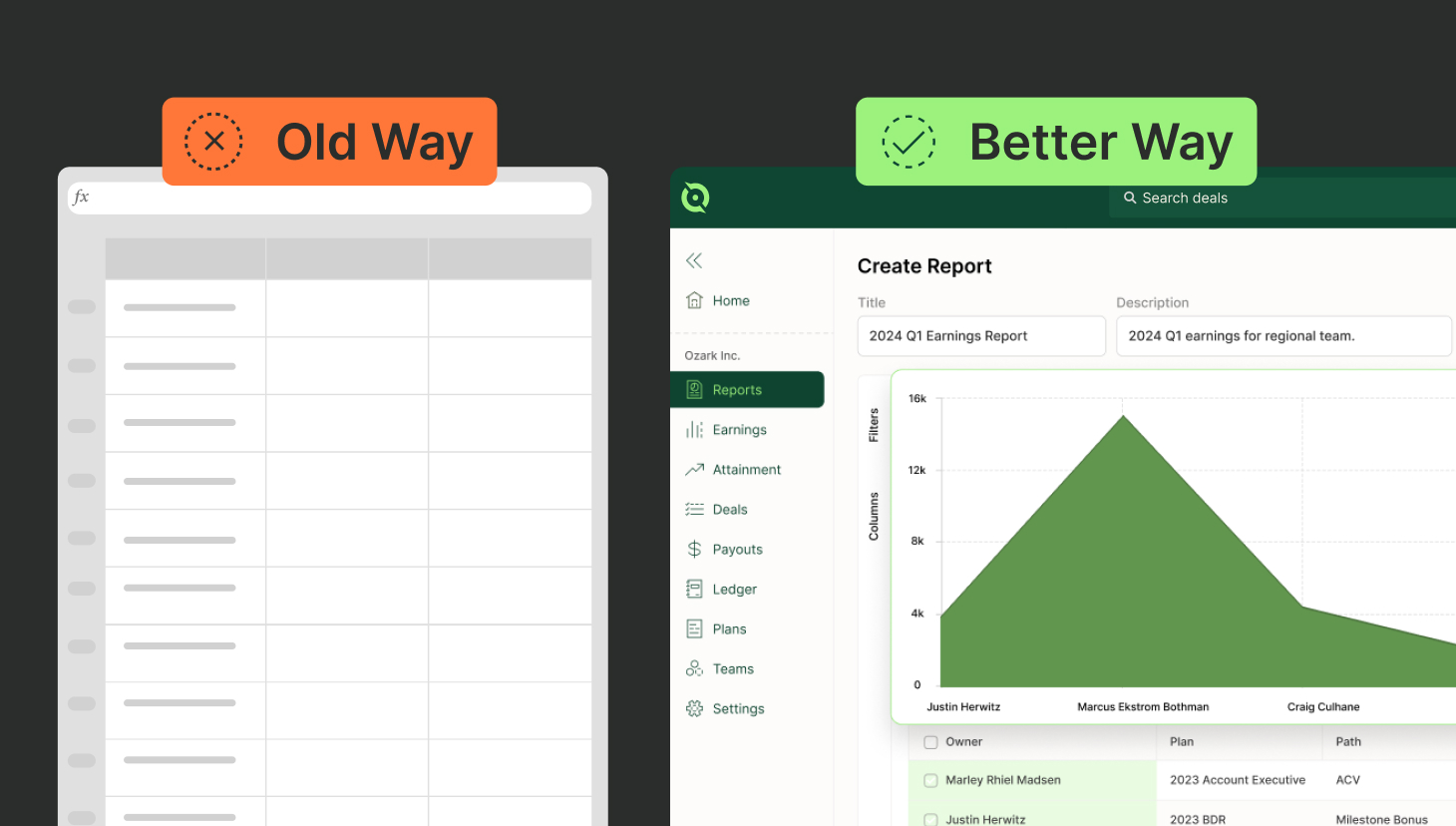As much as we want to mark every opportunity as “closed/won” and retain every customer, sometimes it makes more sense to cut ties than to overextend your team’s resources, workloads, and patience.
“There are no ‘bad’ customers, but there are some that are simply not a good fit,” said Susan Collins, SVP of Strategy at P360.
When that happens, it’s essential to recognize the value of setting boundaries and prioritizing allocating resources where they will yield the greatest return. While parting ways with a customer may initially seem daunting, it can ultimately free up time and energy to focus on serving clients who align more closely with your organization’s objectives and values.
By clearly understanding your ideal customer profile and proactively managing client relationships, you can ensure that your team operates efficiently and effectively while delivering exceptional service to those who matter most.
Below, we connected with five Sales and RevOps leaders from Women in Sales and RevOps Co-op to learn when they’ve intentionally churned customers and prospects and how they did so tactfully.
This blog features the expertise of:
- Susan Collins, SVP of Strategy, P360
- Amber Milks, Co-Founder and COO, BILLIONS
- Ashleigh Early, CEO, Other Side of Sales Consulting
- Christian Freese, Founder, RevPal
- Lindsay Rios, Advisor, Fractional Leadership
Susan Collins, SVP of Strategy, P360
When it’s time to churn: Cost of service > revenue
Susan: The obvious metrics are customers for whom the cost of service is higher than our revenue/we have a negative LTV for that business, and there are no offsetting advantages that make up for the shortfall.
I might tolerate thin or even negative margins for a customer that provides great references, a big (referenceable) logo, co-development expertise, or intros to a desirable market segment that I otherwise would struggle to access.
In those cases, the LTV would encompass more than just that single revenue stream.
However, without those other factors, we either re-negotiate or decline to renew the business. (VERY important IMO to offboard them professionally; there is no point in creating negative noise.).
Other times to consider proactively churning a customer:
- Planning to exit a market due to regulatory reasons or data suggests there’s not enough business there to warrant the investment
- “Customers who are abusive to our team. I don’t tolerate that for any amount of money,” said Susan.
“Customers who are abusive to our team. I don’t tolerate that for any amount of money.”
Best practices when saying goodbye
Susan: If the numbers don’t work, we understand, and we will bend over backward to ensure we support them as they look for alternatives.
This could include:
- providing a file of historical data
- making introductions to other service providers,
- Thanking them for their business and wishing them well.
If it is a case of exiting geography or something along those lines, we have notification clauses in our contracts for nonrenewals, and we follow those constructs.
For the (very few) customers who are abusive, I expect to speak personally to their leadership and explain that we only maintain business relationships that are conducted professionally and in accordance with our terms of service.
Our contracts are quite clear about violations of our TOS resulting in a loss of service.
The response might be shock and assurances that they would not tolerate abusive behavior either, in which case we might extend a “second chance” (obviously with different representatives from their organization).
Streamline commissions for your RevOps, Finance, and Sales teams
Design, track, and manage variable incentives with QuotaPath. Give your RevOps, finance, and sales teams transparency into sales compensation.
Talk to SalesAmber Milks, Co-Founder and COO, BILLIONS
When Amber churned a customer: Customization demands
Amber: We had a contentious scenario at a former company when we onboarded a small customer into a very big enterprise product. This happened before I arrived, and the team had to custom-build the product for them. It was constant, and it would never be a good fit.
They told the customer that we can’t continue supporting their customization needs. You can find someone who can, or we can decide to cut ties.
This was hard because this sector was an area our company was testing the water to get into. But, the company wasn’t prepared to handle the customer, and they had to tell the customer that.
At the end of the day, you have to explain to the customer, “Do you want to keep paying for something that’s not worth your time and money?” Ultimately, they’ll agree to part ways. And that’s when you allow early terminations without cancellation fees.
Other times to consider proactively churning a customer:
- Customer at renewal says they’re going to a competitor and asking for a discount. “Let them churn!” said Amber. “You shouldn’t be the favored tool just because you’re cheaper.”
- If it’s a feature you’re never going to have. “If you’re coming to me and asking for one must-have that we don’t have, and there’s another tool that does have it, be honest upfront,” Amber said.
If they leave you, let them leave you in the best way possible.
Best practices when cutting ties
Amber: If you’re trying to fight with your customer about cancellation nonsense, it will cost you more in manpower than to let them cancel. It’s not worth the fight. Let them churn. Eat the cost, and move on. You’ll spend more cycles fighting, collecting on it, and then compromising your company’s reputation.
Choose your battles. If they leave you, let them leave you in the best way possible.
Ashleigh Early, CEO, Other Side of Sales Consulting
When Ashleigh churned a customer: Lack of usage/not solving problem they had
Ashleigh: I worked with a client for six months who declined to renew their client for two reasons. First, their client was not using the product regularly, and second, they weren’t using it because it wasn’t solving their problem.
They approached it from an ethical standpoint: do the right thing. They didn’t think it was fair to continue taking money for a product they wouldn’t use.
Additionally, my client was concerned about product reputation. They didn’t want metrics built on someone not using the product properly or forcing it to do something it couldn’t do.
So, they let them out of a 3-year contract and let them buy it out for a reasonable amount.
It hurt… but it didn’t hurt hurt.
Other times to consider proactively churning a customer/prospects:
- Client outgrows you. “I churned a client because I’m too expensive for them. It was a mutual decision. ‘You have a solid sales process, solid sales reps, you do not need to keep paying me to tell you you’re doing a good job,” Ashleigh said.
- Cutting ties with prospects due to misogynist and racist language. “The customer is not always right; sometimes the customer is a jerk, and if that’s the case, protect your team because you’ll protect your customers, and that protects the bottom line.”
The customer is not always right; sometimes the customer is a jerk, and if that’s the case, protect your team because you’ll protect your customers, and that protects the bottom line.
Best practices when cutting ties:
Ashleigh: Start with an honest conversation, transparency, and communicating intent. There have to be conversations about what’s working and what’s not. This should be evidence-based, not ‘it feels like’ or ‘it seems like.’ Instead, ‘here is exactly what we are seeing.’
A classic negotiation tactic is to come up with three options. I don’t find that very collaborative. Ask them, ‘What does success look like to you? What’s your ideal outcome?’ You’ve got your three ideas in the background, but then you meld those to create an exit deal.
You know you’ve done a churn correctly when the churned customer will still refer you to do business.
Calculate OTE:Quota ratios
Use this free calculator to ensure your reps’ on-target earnings and quotas mirror what they’re bringing in for the business.
Try it NowChristian Freese, Founder, RevPal
When Christian churned a client: 3rd customer woes
Christian: I provide RevOps as a service or fractional RevOps to teams, primarily in the SaaS industry. My third customer, because I was so new — and I think many startups feel this way — we want the customer, and we’ll figure out the rest later.
So, I focus on CRMs like HubSpot, Salesforce, and best-of-class solutions. But this customer was on an outdated platform… it was terrible. I knew this. I looked at YouTube videos and tutorials, and after figuring it out a bit, I realized it was very similar to Salesforce. We can figure it out.
But — we did not figure it out. A lot of the solutions I prescribed would not work with their setup. So, there are two routes I could have taken.
I could have kept working and provided a half-assed solution and risked a little black mark on my reputation or lost a potential reference down the line. Instead, I began documenting why we couldn’t do X, Y, and Z. Then, over our 1:1, I prepped them and asked for a full hour versus 30 minutes. And, I laid everything out to them.
He appreciated it, and to this day, he refers people my way.
Ways to avoid intentionally churning customers:
- Preach fit in discovery calls
- Have a checklist for you and your reps: “It should include ‘this is what to look for,’ ‘this is how we qualify them,’ and ‘if they don’t qualify, how to communicate this and how to refer them to someone who can help them,’” Christian said.
- Identify commonalities across customers and prospects you’ve churned over the past quarter
Lindsay Rios, Advisor, Fractional Leadership
When Lindsay churned a customer: Using product differently than intended
Lindsay: At a previous organization, as Head of CS, I had my first renewal coming up, and it was a really big logo. One that everyone knows. But they never really used our product for what it was meant for. At the time, we didn’t care. But as the company was gearing up for our Series A round, we needed testimonials.
The founder asked them if they’d be open to it, and the customer replied, ‘You probably don’t want our testimonial.’
So when I stepped in, I asked for the lowdown. Why are they so snarky?
It turns out there was a product bug that allowed anyone who logged in to get a single-sign-on (SSO). There were hundreds of people who had SSO and joined our platform as users. At this time, we sold this by seat at $100/seat. And they had about 300 people logging in.
Moreover, our product is specific to product teams, primarily designers and a few developers — not hundreds of people typically. They were using it for documentation, almost like a Notion. And they had a lot of feedback that was not based on what our product was intended to be used for. So, when the renewal time came, I laid it out. If you want to continue using us for what you do, that’s fine. You need to pay for the users using it and understand that the feedback your team is providing us, like that our product doesn’t work very well, is because you’re not using it how it’s supposed to be used.
They didn’t churn that year, and we got them to pay more than double the previous year. But for the next renewal, I said that I don’t think we should let them renew, but we need to make it their idea. And we did.
Other times to consider proactively churning a customer/prospects:
- Disrespectful contacts
Be absolutely truthful. Tell them the truth! And be professional no matter what.
Best practices when having to churn a customer:
Lindsay: Be absolutely truthful. Tell them the truth! And be professional no matter what. I think there will be a lot of scenarios – maybe someone who got your blood boiling – you have to kill them with kindness. It will always go better, even if they are irate. If it comes back around, at least you know you composed yourself and the company in the greatest way possible.
Lastly, stand your ground. Don’t backpedal. Make your decision internally with your team.
Streamline commissions for your RevOps, Finance, and Sales teams
Design, track, and manage variable incentives with QuotaPath. Give your RevOps, finance, and sales teams transparency into sales compensation.
Talk to SalesConclusion
So, there you have it. Some customers are not in your best interest to keep. Prospects too.
However, that doesn’t mean just to send them on their way. These five leaders each emphasized the importance of communicating clearly and honestly, collaborating with clients on the best exit paths, and ending things amicably. Just because they aren’t a good fit now, doesn’t mean they won’t in the future.
For more RevOps best practices, scroll down below to subscribe to our newsletter.



